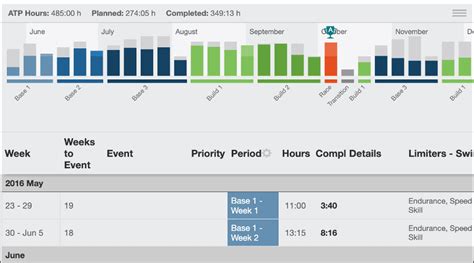Optimize workout intensity: How do peak performers prevent plateaus?

For anyone committed to fitness, the dreaded plateau is an inevitable hurdle. You’re making progress, feeling stronger, faster, or more enduring, and then suddenly, nothing. Your numbers stall, your body stops changing, and motivation can wane. But for peak performers, reaching new heights isn’t just about pushing harder; it’s about pushing smarter, by meticulously optimizing workout intensity.
The Plateau Predicament: Why Progress Stalls
A training plateau occurs when your body fully adapts to the current stimulus, meaning the demands you place on it are no longer sufficient to trigger further physiological adaptations. This isn’t a sign of failure but a natural biological response. Common culprits include a lack of progressive overload, insufficient recovery, nutritional imbalances, or simply performing the same routines over and over, leading to muscular and nervous system adaptation.

Understanding Workout Intensity: More Than Just Lifting Heavy
Intensity isn’t solely about the weight on the bar. While crucial, it’s a multi-faceted concept encompassing:
- Load: The weight or resistance used.
- Volume: Total work performed (sets x reps x load).
- Density: Work performed in a given time.
- Tempo: Speed of movement.
- Rest Intervals: Time between sets or exercises.
- Rate of Perceived Exertion (RPE): A subjective measure of how hard you’re working.
Peak performers master the manipulation of these variables to consistently challenge their bodies without overtraining.
Core Strategies for Sustained Progress
1. The Power of Progressive Overload
At its heart, preventing plateaus comes down to progressive overload. This means continually increasing the demands placed on your body over time. It can manifest in various ways:
- Increasing weight or resistance.
- Performing more repetitions with the same weight.
- Adding more sets.
- Reducing rest times between sets (increasing density).
- Increasing the frequency of training.
- Improving technique or range of motion.
2. The Art of Periodization
Elite athletes don’t train at peak intensity all year round. They employ periodization, a systematic planning of training that manipulates training volume, intensity, and specificity over cycles. These cycles include:
- Macrocycles: Long-term plans (e.g., a year).
- Mesocycles: Medium-term blocks (e.g., 4-12 weeks) with specific goals (e.g., hypertrophy, strength, power).
- Microcycles: Short-term plans (e.g., 1-2 weeks) focusing on daily or weekly training.
By varying the focus and intensity across these cycles, the body gets a chance to adapt, recover, and avoid staleness.

3. Strategic Variation: Shifting the Stimulus
While consistency is key, intelligent variation is the antidote to adaptation. Changing exercises, rep schemes, training modalities (e.g., combining strength training with plyometrics or conditioning), or even the order of exercises can introduce a novel stimulus to the muscles and nervous system, prompting new growth and adaptation.
4. The Critical Role of Recovery and Deloading
Progress isn’t made in the gym; it’s made during recovery. Deload weeks—periods of significantly reduced volume and/or intensity—are vital for allowing the body to fully repair, adapt, and supercompensate, leading to enhanced performance in subsequent training blocks. Active recovery, adequate sleep, and stress management are equally important.

5. Listening to Your Body and Data
Peak performers are highly attuned to their bodies. They use subjective feedback like RPE, mood, and perceived fatigue, alongside objective data from wearables (e.g., heart rate variability (HRV), sleep tracking), to make informed decisions about daily training adjustments. This adaptive approach prevents overtraining and optimizes readiness.

6. Fueling for Performance: Nutrition and Hydration
Optimal training intensity demands optimal fuel. A well-balanced diet rich in macronutrients (proteins, carbohydrates, fats) and micronutrients, along with consistent hydration, is fundamental for energy, recovery, and preventing performance dips that can masquerade as plateaus.
Implementing Intensity Optimization: Practical Tips
- Keep a Training Journal: Documenting sets, reps, weight, RPE, and even how you felt can highlight trends and inform future programming.
- Seek Expert Guidance: A qualified coach can design a personalized, periodized plan and provide objective feedback.
- Prioritize Sleep: Aim for 7-9 hours of quality sleep per night to facilitate muscle repair and hormonal balance.
- Integrate Deloads: Schedule a deload week every 4-8 weeks, depending on your training intensity and individual recovery needs.
- Don’t Be Afraid to Adjust: If you’re consistently underperforming or feeling excessively fatigued, reduce intensity or take an extra rest day.

Conclusion: The Journey of Continuous Adaptation
Preventing plateaus isn’t about finding a secret exercise; it’s about adopting a scientific and adaptive approach to training intensity. By embracing progressive overload, strategic periodization, intelligent variation, and prioritizing recovery, peak performers ensure their bodies are always challenged, always adapting, and continually progressing towards new levels of fitness. It’s a continuous journey of learning, adjusting, and growing, ensuring the path to peak performance remains dynamic and rewarding.









